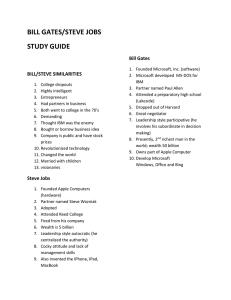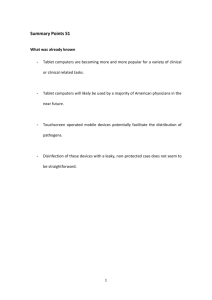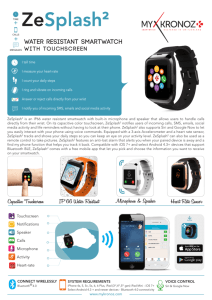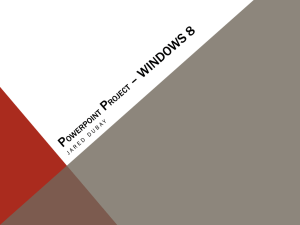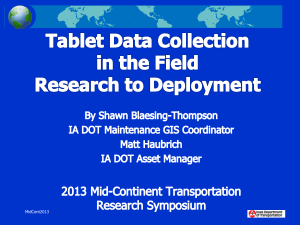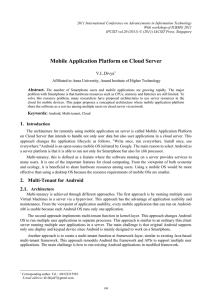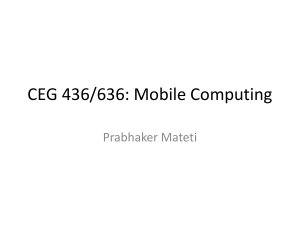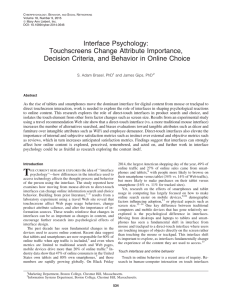Integrated Technology Chapter 1
advertisement
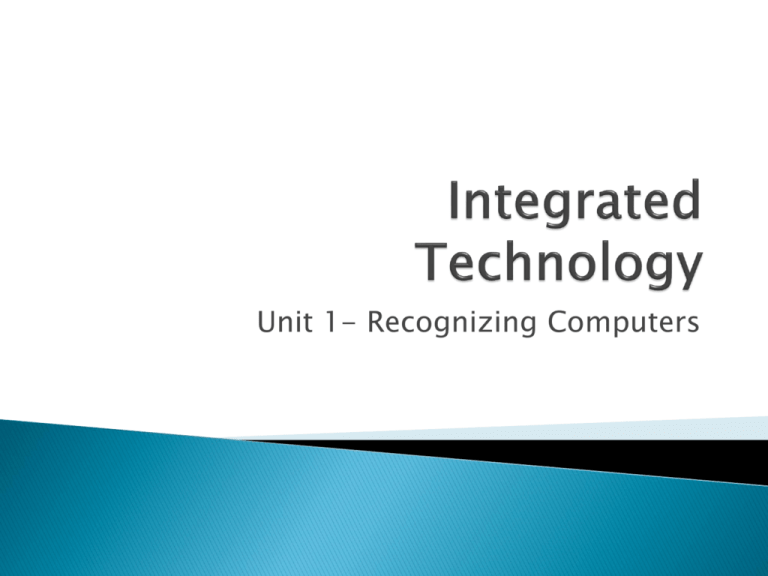
Unit 1- Recognizing Computers Understand the importance of computers Identify significant times in computer history Describe how all computers function the same way Define computers & computer systems Classify different types of computers A computer is a person, instrument, or machine that gathers, processes, and stores information. In groups, make a computer history timeline of events Use an online timeline maker Mark at least 10 significant events ◦ At least 1 event from the following decades: 2000’s, 90’s, 80’s, 70’s, 60’s, 50’s ◦ 1 significant tech event from your life ◦ Include a picture of the device for each ◦ Use your own words to describe each Massive ENIAC Designed for military & government Steve Jobs and Steve Wozniak created the first user-friendly personal computer, called the Apple, with a built-in keyboard, display screen, and storage unit. ◦ The term personal computer refers to a computer designed to be used by one person at a time. Bill Gates worked with IBM ◦ Developed DOS IBM computer in 1981 released Pictured- $3500 IBM made the design available to competing companies, resulting in clones or “IBM compatible” computers Today, the term PC often refers to any computer AOL (as a service) ◦ 1993 Internet (as we know it) ◦ Mid 1990’s iPod ◦ 2001 First Smartphone ◦ 1994 ◦ 2001- in US Computers and their parts have gotten smaller & more powerful Other devices are now considered computers ◦ Phones, gaming systems, Tablets, etc. Work is more efficient, communication has changed/grown, entertainment changed Same as before… Receives data (INPUT), processes data, stores data, produces a result (OUTPUT) Computer includes: ◦ ◦ ◦ ◦ Hardware Software Data Peripherals Who created the first user-friendly computer? ◦ Steve Jobs & Steve Wozniak What term describes a computer design made available to other manufacturers? ◦ Compatible or clone What computer took up the size of a city block back in the 40’s & 50’s? ◦ ENIAC What four function does ever computer perform? ◦ Input data, process data, output data, store data Personal computer- Windows PC or MAC Individual user Case/monitor or all-in-one Windows PC or Mac Portable- They use a battery As powerful as a desktop Touchpad for mouse/ Touchscreen Laptop running Google’s Chrome OS Fast boot Apps instead of software Cloud-based storage Use while connected to Internet PC in smaller size Many functions of PC ◦ Has memory, storage, CPU, touchscreen ◦ Apps, Internet, Email ◦ Android, iOS, Windows Using store ads, find the lowest price of each: ◦ ◦ ◦ ◦ ◦ ◦ ◦ ◦ Desktop with monitor iMac Laptop MacBook Chromebook Android Tablet (low & high price) iPad Windows Tablet Report the brand & model # with the price Cell phone runs computer applications ◦ Internet, camera, music, GPS, phone, email, text Touchscreen or keyboard Windows, iOS, Android E-book reader Portable music player Handheld game device Multiple CPUs, lots of RAM, multiple, highcapacity drives Video Editing, CAD, Animation, Scientific, CSI, X-Ray Performs functions for computers on a network (provides a service) ◦ Hold Files/Data ◦ Handle Email ◦ Web Site PC connects to it Huge amounts of data processing Hundreds of thousands $ Large institutions, hospitals & govt. Large & fast Perform BIG calc’s Volumes of data Millions of $$$ Government Military Research Labs NASA Name some… Managing an airline reservation & ticketing system or patient records would be best performed by which class of computer? ◦ Mainframe Which device would animators use to make CG effects for a movie? ◦ Workstation What is the fastest type of computer? ◦ Supercomputer Appliances have what kind of computer? ◦ Embedded What’s the biggest advantage of using a notebook? ◦ Portability T/F. A server is dedicated to sharing resources & data. ◦ True Which type of computer provides services to other PCs, such as providing a website? ◦ Servers What device would have Android OS on it? ◦ Smartphone or Tablet Unit 1- Recognizing Computers
